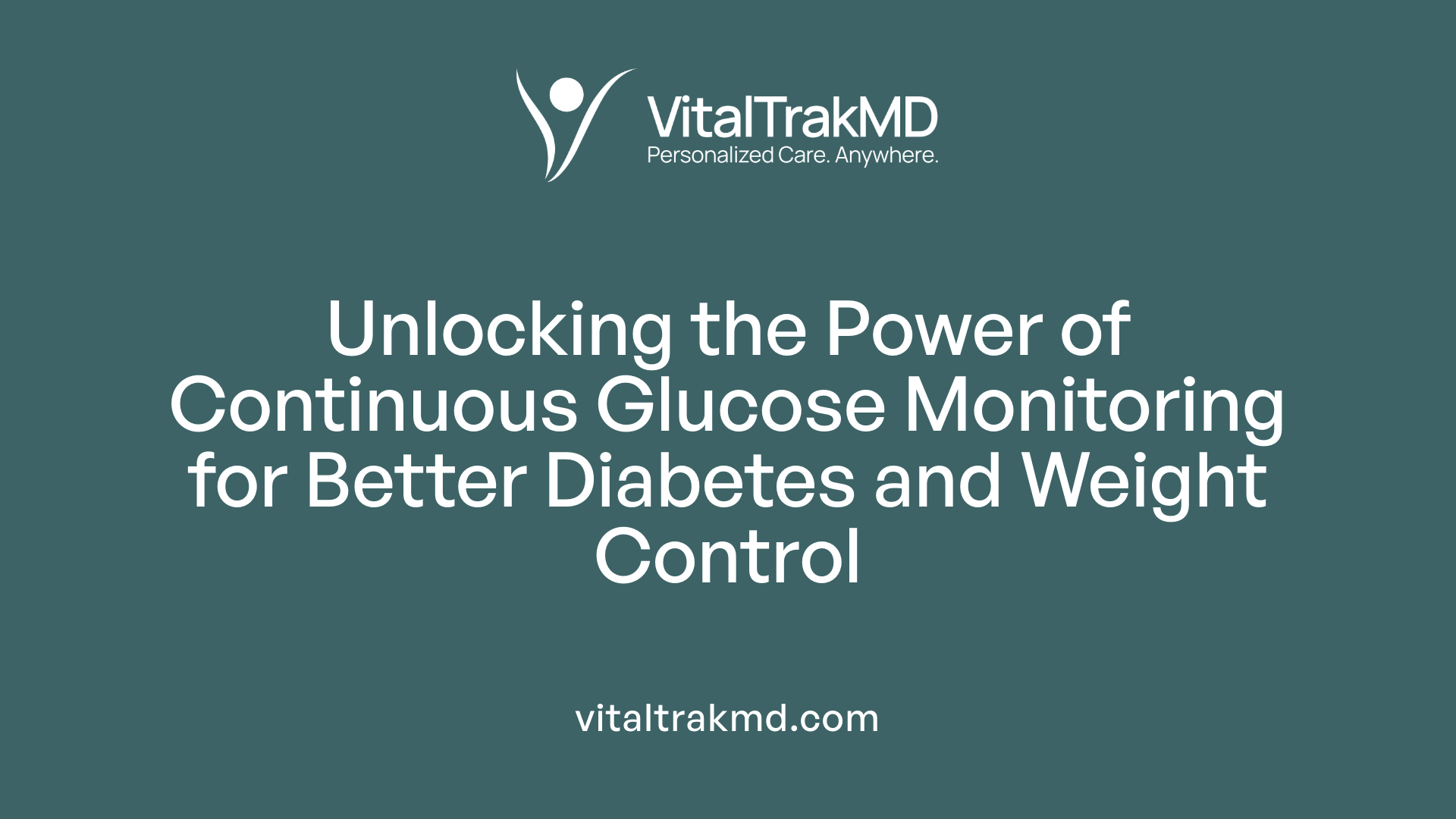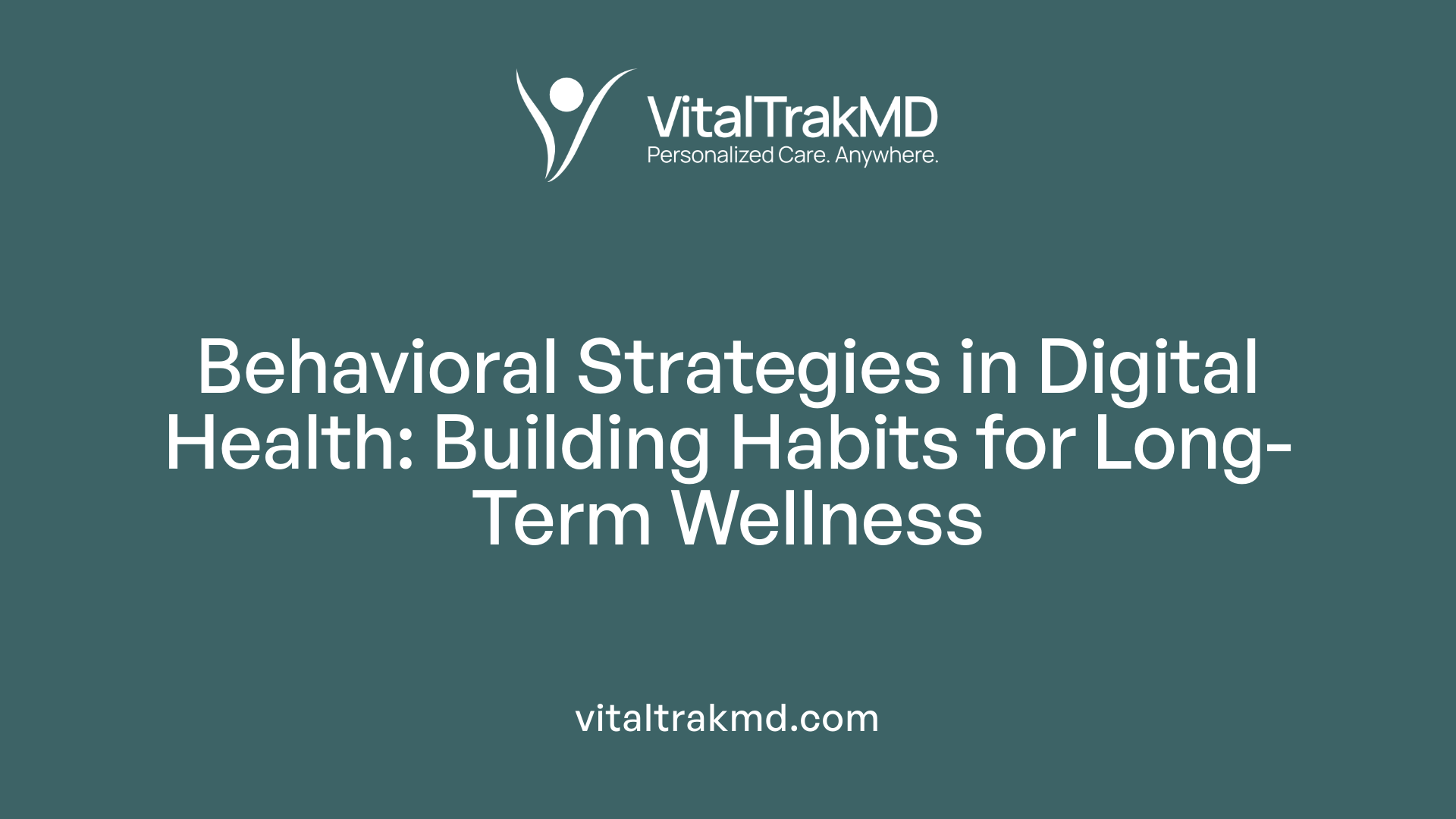Supporting Patients With Tools for Monitoring Blood Sugar and Heart Health

Why Monitoring Matters in Chronic Disease Management
Chronic conditions like diabetes and heart disease require vigilant management to prevent complications and improve quality of life. Today’s technological advances provide patients and healthcare providers with powerful tools to monitor blood sugar and heart health continuously and accurately. Supporting patients in using these tools, alongside personalized wellness and care programs, is key to sustaining health improvements and fostering long-term wellness.
The Role of Continuous Glucose Monitoring in Diabetes and Weight Management

Types of continuous glucose monitors (CGMs)
Continuous glucose monitors come in two main types: real-time CGMs and intermittently scanned CGMs. Real-time CGMs continuously transmit glucose data to a display device, offering high and low blood sugar alerts along with remote data sharing capabilities. These devices often do not require finger-stick calibration as they are factory calibrated. Intermittently scanned CGMs require a manual scan with a separate reader to display glucose levels and do not provide automatic alerts, though they are generally more discreet and affordable.
Benefits of real-time CGM data
Real-time CGMs are especially beneficial for proactive glucose management because they alert users immediately when blood sugar levels are too high or too low. This allows timely interventions, reducing the risk of severe hypoglycemia or hyperglycemia. Continuous data also facilitates better communication with healthcare providers through data sharing, enhancing personalized diabetes care.
Using CGMs for weight loss and metabolic health
CGMs support weight management by helping users understand how food intake, physical activity, and other habits impact their glucose levels. This real-time feedback can motivate healthier eating patterns and physical activity, which in turn contribute to reduced body weight and improved metabolic health. The device's insights encourage retraining of appetite regulation, reducing overeating and promoting sustainable fat loss.
Behavioral insights facilitated by CGMs
The rich glucose data provided by CGMs empower users to make informed lifestyle decisions. Features like trend reports, movement alerts, and habit reminders guide users toward adjustments that improve their overall wellness. By revealing hidden glucose spikes or dips, CGMs increase awareness and help manage potential insulin resistance and metabolic health issues more effectively.
FDA clearance and user testimonials
Many CGMs, such as those integrated with apps like Signos, are FDA-cleared, reassuring users of their safety and efficacy. Positive user testimonials emphasize improvements in weight loss and health monitoring, underscoring the devices' practical benefits in daily health management for people with diabetes and those seeking better metabolic health.
Smartphone Apps and Connected Devices as Self-Care Tools

Popular diabetes apps and their functionalities
Diabetes management apps like mySugr, Health2Sync, and OneTouch Reveal offer robust tools that integrate with glucose meters. These apps track blood glucose trends, medication schedules, dietary habits, and physical activity. This comprehensive tracking supports weight loss and wellness goal management by offering users clear insight into their health patterns.
Integration with glucose meters and other devices
Many diabetes apps can connect seamlessly with glucometers and continuous glucose monitors (CGMs). This linkage provides real-time glucose data and trend analysis, enabling more responsive disease management. For example, CGMs paired with these apps alert users to high or low blood glucose levels, helping prevent adverse events without the need for frequent finger sticks.
Enhancing self-management through apps
Using these apps encourages better self-care practices. Research demonstrates that app users with type 1 and type 2 diabetes have improved blood glucose control, evidenced by a 0.57% drop in hemoglobin A1C over three months. Additionally, there are associated reductions in body weight and waist circumference, underscoring the effectiveness of these digital tools.
Data sharing with providers
Advanced diabetes apps enable real-time sharing of health data with care teams via connected devices. This continuous flow of information fosters timely interventions and personalized coaching. Features such as AI-driven insights and virtual care programs further enhance users’ ability to manage their conditions effectively.
Supporting emergency health needs
Beyond day-to-day management, some apps like Medical ID store critical emergency medical information. This supports overall health by ensuring that first responders or healthcare providers have essential health details during emergencies, improving patient safety.
| App/Device | Functionality | Benefit |
|---|---|---|
| mySugr, Health2Sync | Track glucose, meds, diet, activity | Improved glucose control and weight management |
| Continuous Glucose Monitors (CGMs) | Real-time glucose monitoring with alerts | Reduces need for finger sticks; proactive glucose control |
| Medical ID | Emergency medical info storage | Enhances safety in emergencies |
| Connected Devices (glucometers, smart scales) | Health data tracking and sharing | Enables personalized care and remote monitoring |
Home Monitoring Devices for Heart and Respiratory Health
How do home health devices contribute to monitoring heart and respiratory health?
Home health devices are essential in enabling individuals to keep a close watch on their cardiovascular and respiratory wellbeing. Blood pressure monitors allow users to detect hypertension trends early by providing accurate readings regularly, which is critical for preventing heart-related complications.
Pulse oximeters measure oxygen saturation in the blood and heart rate, serving as an ideal tool for spotting respiratory difficulties or deterioration. This device is particularly useful for people with chronic respiratory conditions or those prone to respiratory infections.
Smartwatches enhance health tracking by continuously monitoring heart rate, sleep quality, stress levels, and even performing electrocardiograms (ECG). Their ability to offer real-time data and alerts helps users and healthcare providers identify warning signs promptly and tailor care plans accordingly.
Why is monitoring environmental factors important?
Environmental conditions significantly impact respiratory health, and home monitoring devices play a vital role in recognizing these factors. Air quality monitors measure pollutants, humidity, and carbon dioxide levels indoors, alerting individuals to potentially harmful conditions that could worsen respiratory illnesses or trigger symptoms.
Thermometers are indispensable for early fever detection, allowing timely response to infections or other health concerns. Tracking temperature changes helps users monitor illness progression and seek medical care when necessary, contributing to overall health maintenance.
Together, these devices empower individuals with valuable insights, enabling proactive management of heart and respiratory health in the comfort of their homes.
Personalized Virtual Care Programs Integrating Technology and Coaching

What features make wellness and care programs effective for sustainable weight loss?
Omada's virtual care program exemplifies effective wellness initiatives by combining personalized care plans with smart health devices, one-on-one health coaching, and weekly educational lessons. This blend of tailored support focuses on managing diabetes, hypertension, and weight, helping participants adopt sustainable lifestyle changes. The integration of connected devices such as continuous glucose monitors (CGMs) and digital scales allows users to track and respond to their health data in real-time, enhancing self-management and promoting cardiometabolic health improvements, including weight loss.
How do these programs support long-term adherence and success?
A crucial element of Omada's success lies in its human-centered coaching combined with real-time data from connected devices. This approach motivates participants, keeps them accountable, and personalizes guidance throughout their health journey. Moreover, many programs are accessible at no cost when covered by employers or health plans, removing financial barriers. With over 90% customer satisfaction and millions of messages exchanged between care teams and members, the high engagement ensures sustained commitment needed for managing chronic conditions and maintaining a healthy weight.
By merging technology with personalized education and coaching, virtual care platforms empower users to build lasting healthy habits, effectively manage their conditions, and reduce health risks associated with metabolic and cardiovascular diseases.
Behavioral Change Strategies Embedded in Digital Health Solutions

What role does behavioral change play in wellness and weight loss programs?
Behavioral change is central to achieving lasting wellness and weight loss. Digital health solutions harness techniques like goal setting and self-monitoring, which empower individuals to track progress and stay motivated. These strategies encourage the gradual adoption of healthier habits that can be sustained over time.
Techniques like goal setting and self-monitoring
Apps and digital programs employ goal setting to help users define clear, achievable targets such as lowering blood glucose or losing weight. Self-monitoring through data collection—like logging meals, physical activity, or glucose levels—boosts awareness and supports behavior adjustments. For example, continuous glucose monitors (CGMs) provide real-time feedback that can prompt timely lifestyle decisions.
Cognitive-behavioral approaches
Some digital platforms integrate cognitive-behavioral therapy (CBT) techniques to address psychological barriers impacting health habits. By changing thought patterns around diet and exercise, users are better equipped to resist unhealthy urges and manage setbacks effectively.
Managing environmental and psychological factors
Behavioral change strategies often consider environmental triggers and emotional states that can derail progress. Digital tools may include reminders, habit prompts, or coaching messages to help users navigate such challenges, creating supportive environments for healthy behaviors.
Support for sustainable habit formation
Long-term success hinges on embedding these behavioral strategies into daily routines. Virtual coaching, educational lessons, and personalized feedback—all featured in modern health apps—foster accountability and reinforce sustainable lifestyle changes. This comprehensive support contributes to improved metabolic health and weight management outcomes.
Integrating Care Programs for Comprehensive Patient Support

How can care programs support individuals in maintaining healthy weight loss?
Comprehensive care programs provide personalized, evidence-based nutrition and exercise plans tailored to individual needs. These plans guide users in making healthier lifestyle choices that contribute to sustained weight loss and overall wellness.
Beyond physical health, mental health and behavioral support are integral components. Behavioral therapy and coaching help address challenges like motivation and habit formation, making it easier to stick to weight management goals.
Family and community involvement further enhance program success. Support networks encourage adherence and create environments conducive to healthy living.
Medical integration is achieved through devices such as continuous glucose monitors (CGMs), digital scales, blood pressure monitors, and smartwatches that track vital metrics. Telehealth platforms provide ongoing education and real-time monitoring, allowing healthcare providers to customize care and promptly address issues.
Chronic disease prevention and education are also central. Programs educate participants on managing risk factors for conditions like diabetes, hypertension, and heart disease, emphasizing the interconnected nature of these ailments.
This holistic approach combines nutrition, physical activity, mental health, family support, medical technology, and education – all working together to promote sustained weight loss and improved chronic disease outcomes.
Empowering Patients Through Technology and Personalized Care
The integration of advanced monitoring tools such as continuous glucose monitors, smartphone apps, and home health devices with tailored virtual care programs offers a transformative approach for managing blood sugar, heart health, and sustained weight loss. These tools not only enable precise, real-time health insights but also encourage essential behavioral changes through education and coaching. As technology continues to evolve, combining personalized data with supportive care empowers patients to take control of their health, improve longstanding habits, and reduce the risk of complications from chronic diseases. Supporting patients with these technologies and comprehensive programs is a vital strategy for enhancing wellness, weight management, and overall quality of life.
References
- Blood Glucose Trackers, Food and Exercise Logs, and More
- 7 Essential Health Monitoring Tools for Your Home
- Omada Health: Manage Chronic Conditions & Embrace Your ...
- Signos | Continuous Glucose Monitoring for Weight ...
- Telehealth technology for diabetes care
- Choosing a CGM
- Diabetes Tools and Resources
- Behavior Modification Ideas for Weight Management
- Intensive Behavioral Therapy for Obesity
- CDC-Recognized Family Healthy Weight Programs
Recent articles
Want to Feel Better and Live Healthier?
Join hundreds of patients taking control of their health with personalized care that fits their life – not the other way around.
Rated 4.8/5 by 32+ customers







